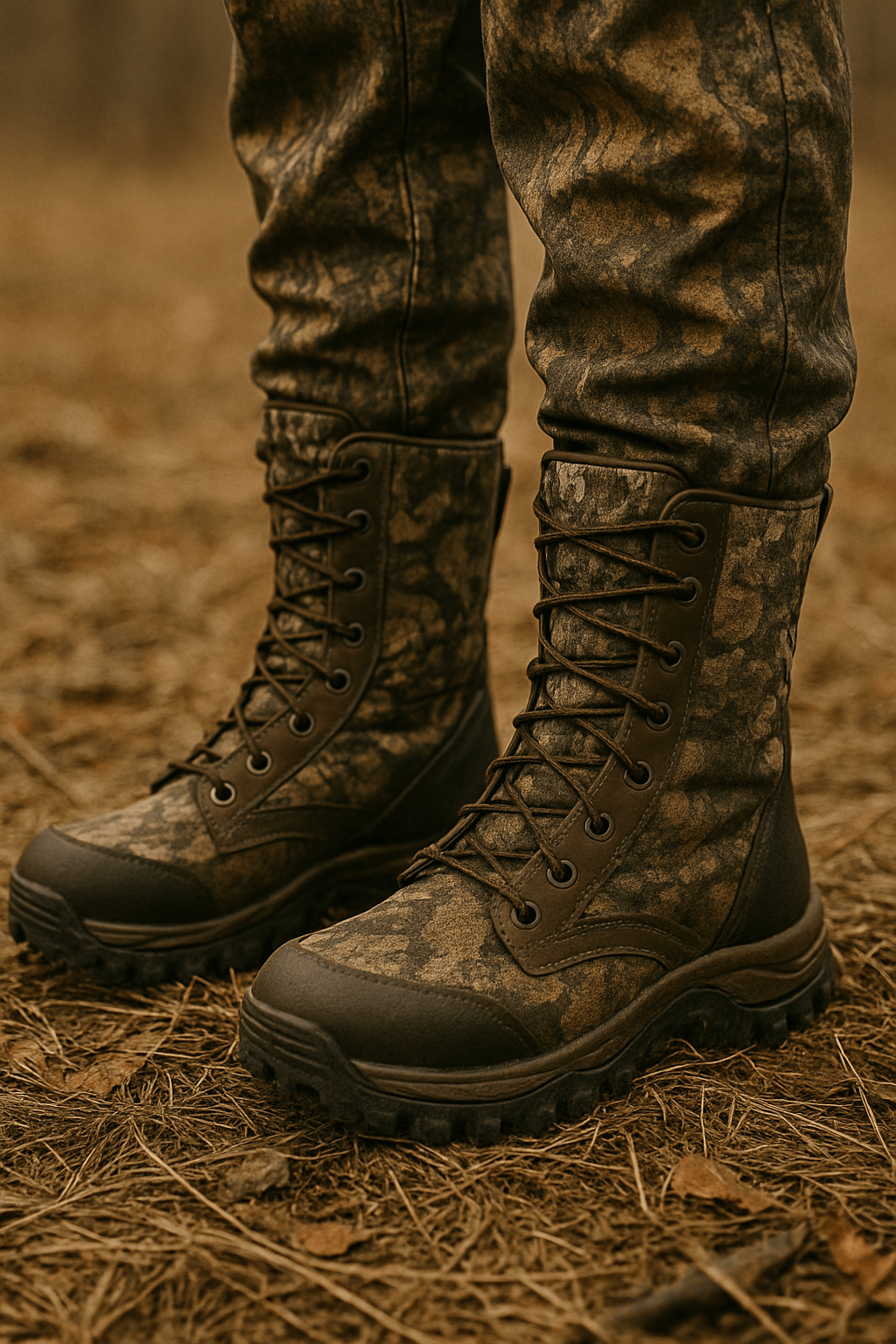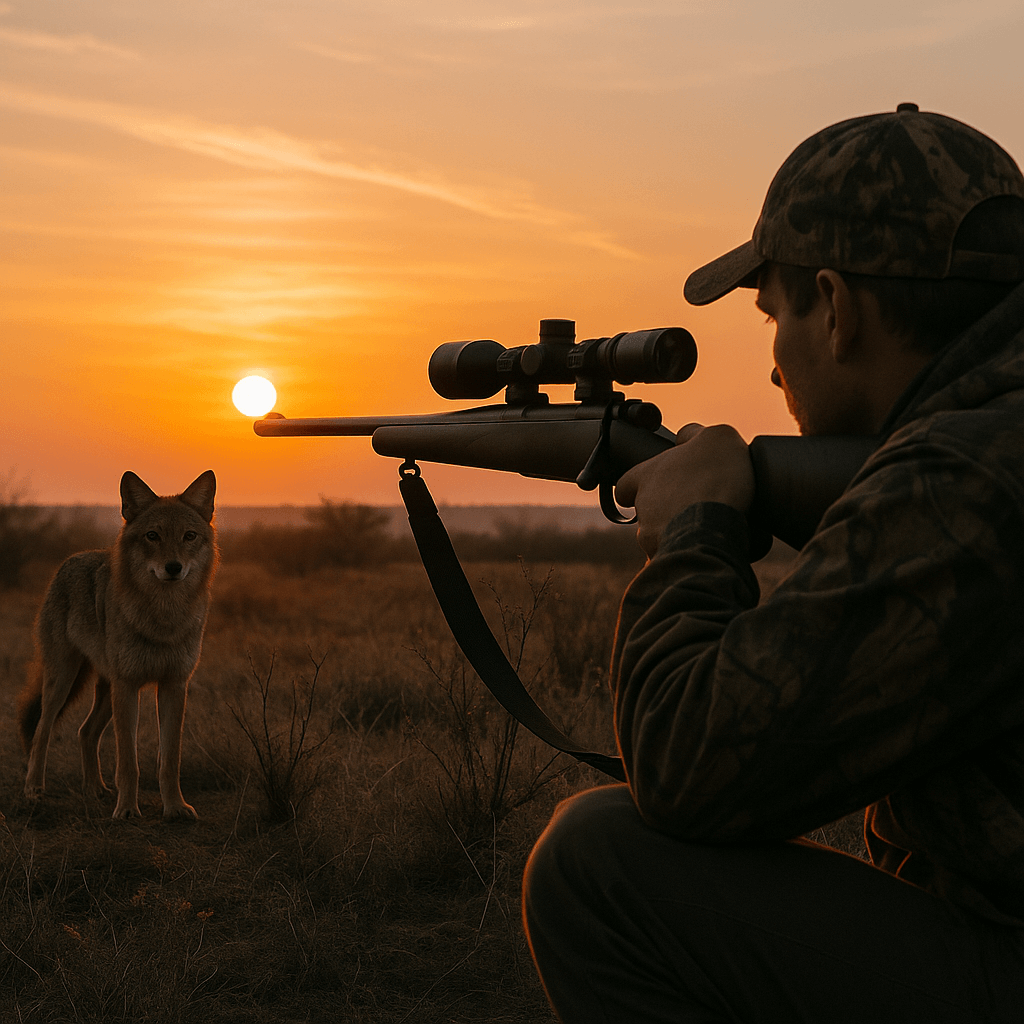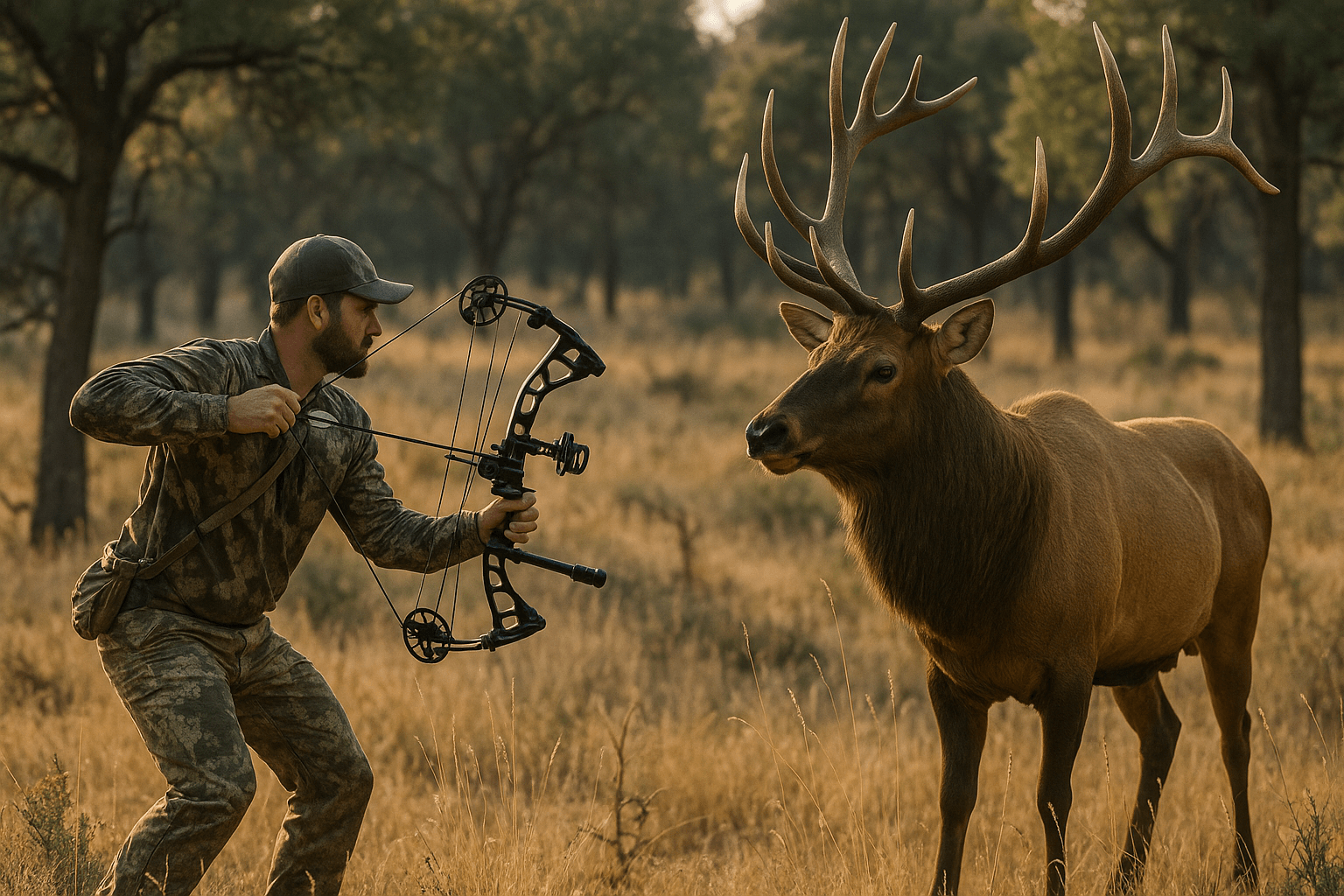Hunting is an incredible way to connect with nature, challenge yourself, and experience the thrill of the outdoors. Whether you’re tracking deer through dense forests, chasing upland game across open fields, or scaling rugged mountains for elk, one piece of gear stands out as absolutely essential: hunting boots. These are more than shoes—these are your basis for staying safe, comfortable, and mobile in some of the most challenging conditions. Here in this detailed 3,000-word guide, we're going to cover everything you want to know about hunting boot, from picking the ideal pair to keeping them at their best for years of trusty service. Whether you're just starting out or are an experienced hunter, this article will assist you in discovering the greatest hunting boot to suit your requirements.
Why Hunting Boots are a Hunter's Best Friend
Your feet get you through each step of a hunt, and if you're not wearing proper footwear, even the most thrilling adventure can be an agonizing one. Hunting boot are built to safeguard your feet, ensure stability, and make you feel at ease under adverse conditions. Consider walking through freezing streams, snowshoeing through deep snow, or treading across rough terrain without suitable boots—your feet would get wet, numb, and achy, spoiling the adventure.
Unlike street sneakers or work boots, hunting boot are specifically designed to meet the special needs of hunting. They're waterproof, tough, and supportive, with aggressive soles for gripping and insulation for keeping feet warm. With all the selections available today, deciding on the proper hunting boot can seem intimidating, but this article will simplify it into easy, doable steps to guide you in making the best decision.
The Significance of Quality Hunting Boots
Investing in quality hunting boot is not merely about comfort—it's about safety and performance. Low-quality boots can cause blisters, twisted ankles, or even frostbite in harsh conditions. Well-designed hunting boot, by contrast, increase your quietness, warmth, and concentration on the hunt. They're an investment in your success and enjoyment, so it's well worth taking the time to locate the right pair.
Key Features to Consider When Purchasing Hunting Boots
To select the best hunting boot, you must familiarize yourself with the features that count the most. Here's an in-depth analysis of what to focus on when buying hunting boot:
1. Waterproofing and Breathability
Hunting usually entails wet conditions, ranging from rainforested woods to muddy marshes. Waterproof huntin boots are necessary to keep your feet dry, which avoids blisters and keeps you comfortable. Choose boots with Gore-Tex or comparable waterproof-breathable membranes. These materials prevent water from penetrating while letting sweat out, so your feet remain dry without getting too hot.
2. Temperature Control Insulation
If you hunt in freezing weather, insulated hunting boot are a requirement. Insulation is graded in grams, ranging from 200 grams for moderate weather to 1200 grams for below-zero weather. For instance, hunting boot with 800 grams of Thinsulate insulation are excellent for winter hunting, which will keep your feet warm on extended periods spent in a tree stand or blind.
3. Durability and Material Selection
Hunting boots must be able to endure thorns, rocks, and daily wear. Top-rated full-grain leather is very tough and provides natural water resistance, but synthetic materials such as Cordura or nylon are lighter and also dry more quickly. Most hunting boots incorporate both types for a compromise of durability and weight reduction.
4. Traction and Sole Design
Slippery surfaces like wet rocks or muddy trails are common in hunting environments. Hunting boot with aggressive lug soles, like those made by Vibram, provide excellent grip and stability. The sole design should match the terrain you’ll encounter—deep lugs for mud, shallower lugs for mixed terrain.
5. Comfort and Fit
Comfort is critical when you’re walking miles or standing for hours. Hunting boot should fit snugly through the heel and midfoot, with enough room in the toe box to wiggle your toes. Features like cushioned insoles, padded collars, and arch support make a big difference on long hunts.
6. Weight Considerations
The heaviness of hunting boot impacts your endurance. Light boots are best for hot weather or energetic hunts, whereas heavier boots offer greater support and insulation for cold, sedentary hunts. Select according to your hunting style and physical requirements.
7. Ankle Support and Height
Hunting boots are available in varying heights, ranging from low-cut to knee-high. Mid- or high-ankle boots are more supportive for uneven ground, whereas low-cut boots are more flexible for level ground. In swampy country or snake territory, higher hunting boot offer added protection.
Types of Hunting Boot for Every Terrain and Season
The greatest hunting boot are a matter of where, when, and how you hunt. Various landscapes and environments necessitate specialized boots. Here is a breakdown of the primary categories of hunting boot and their preferred applications:
1. Upland Hunting Boot
Upland hunting, like chasing pheasants or quail, consists of traversing extensive expanses of grass fields or light cover. Upland hunting boot are light, flexible, and ventilated, with moderate ankle support. They are usually less insulated for hot weather and tough leather uppers to withstand scratches from vegetation.
2. Mountain Hunting Boot
For high-altitude hunting, such as stalking elk or bighorn sheep, you require hunting boot engineered for rough terrain. Mountain hunting boot are stiff, with tall ankle cuffs and aggressive tread for stability on rock faces. They're typically extra-insulated for cold alpine environments and made for heavy backpack loads.
3. Rubber Hunting Boot
Wetlands, swamps, and flooded wood require completely waterproof hunting boot and rubber boots are the best. These rubber boots are a breeze to clean, odorless (a deer hunter's large advantage), and totally water-tight. Find insulated rubber boots for cold conditions and ones with deep lugs for muddy situations.
4. Snake-Proof Hunting Boot
In areas where there are venomous snakes, such as rattlesnakes or copperheads, snake-proof hunting boot are a must. They have thick, puncture-resistant materials that go up the calf, guarding against bites. They're a necessity for warm-weather hunts in snake-infested areas.
5. All-Purpose Hunting Boot
For hunters under mixed conditions, all-purpose hunting boot provide the best of both worlds. These boots find a balance between waterproofing, insulation, and breathing, which makes them effective for all seasons and landscapes. They're equipped for beginners or those who prefer one pair that will work for many different hunts.
How to Choose the Perfect Hunting Boot for Your Needs
With so many varieties of hunting boot, selecting the right one can be a challenge. The following are some useful tips that will guide you in selecting the appropriate pair:
1. Match Boots to Your Hunting Environment
Consider the terrain and weather you’ll encounter. For wet, marshy areas, prioritize waterproof hunting boot like rubber ones. For mountainous regions, opt for sturdy mountain hunting boots with strong ankle support. Matching your boots to your environment ensures comfort and safety.
2. Decide on Insulation Levels
Insulation varies with the season and weather. For early fall or summer hunts, uninsulated or mildly insulated hunting boot are adequate. For winter hunts, select heavy-insulated boots (800-1200 grams) to provide warmth in extreme cold.
3. Fit Appropriately
Fit is everything when it comes to hunting boot. Try boots on in the afternoon when your feet are slightly swollen, and wear the socks you’ll use while hunting. Walk around to check for rubbing or pressure points. A proper fit prevents blisters and fatigue on long hunts.
4. Set a Realistic Budget
Hunting boot range from $50 to $400 or more. High-end boots often offer superior materials and durability, but there are excellent mid-range options too. Decide how much you’re willing to spend and look for boots that deliver the best value for your needs.
5. Research and Test
Before buying, read reviews from other hunters to see how the boots perform in real-world conditions. If possible, test the boots on a short hike or walk to ensure they feel right. Many retailers offer generous return policies, so take advantage of them if the boots don’t meet your expectations.
Top Hunting Boot Brands to Consider
Certain brands have a reputation for producing top-notch hunting boots. Let's have a look at five of the top brands and why their boots are so good:
1. Danner
Danner hunting boots are both comfortable and long-lasting. Their Pronghorn series is a favorite for general-purpose hunting, with Gore-Tex waterproofing, Vibram soles, and a lightweight style that never compromises support.
2. LaCrosse
LaCrosse does rubber hunting boots, such as the Alphaburly Pro, well, which are ideal for wet conditions. They are odor-free, waterproof through and through, and constructed to handle years of hard wear.
3. Irish Setter
Irish Setter hunting boots are both stylish and functional. Their Vaprtrek boots are lightweight and breathable, making them perfect for upland hunting or warm-weather hunts.
4. Muck Boot
Muck Boot is known for tough, waterproof hunting boots for wet and muddy conditions. Their Arctic Pro boot is a favorite for extreme cold, with extra insulation and comfort.
5. Kenetrek
For hunters in the mountains, Kenetrek hunting boots are the best. Their Mountain Extreme boots provide maximum support, insulation, and durability for rugged terrain.
Keeping Your Hunting Boots in Top Condition for Years to Come
To make the most out of your hunting boots, careful maintenance is required. Proper maintenance leads to a longer life expectancy and optimal performance. The following is how to maintain your hunting boots in the best condition:
1. Clean After Every Use
Following a hunt, clean dirt and mud off your hunting boots using a soft brush and water. On leather boots, use mild soap to prevent the material from being damaged. Air dry them away from direct heat sources, which can crack leather or distort synthetic materials.
2. Apply Waterproofing Treatments
Even water-resistant hunting boots can be helped by occasional treatments. Apply a waterproofing wax or spray to leather boots to keep them water-resistant. For rubber, a silicone spray will help to keep the rubber soft and prevent cracking.
3. Store Properly
Keep your hunting boots in a dry, cool area to avoid mold and mildew. Stuff them with newspaper or use a boot tree to keep them shaped. Don't store them in damp basements or garages, as moisture can ruin the materials.
4. Replace Worn Parts
Insoles and laces eventually wear out. Replace them as necessary to keep your hunting boots comfortable and secure. Aftermarket insoles can also enhance support and cushioning.
5. Check for Damage
Be sure to check your hunting boots frequently for tears, thin soles, or loose stitching. Minor repairs, such as patching a tear or re-gluing a sole, can forestall larger problems and prolong the life of the boots.
Frequent Mistakes to Steer Clear of When Purchasing Hunting Boots
Even seasoned hunters can err when selecting hunting boots. Here are some mistakes that are most likely to be made and how to avoid making them:
1. Purchasing the Incorrect Size
Ill-fitting hunting boots cause blisters, discomfort, and injury. Always fit on hunting socks when trying boots on and reference the company's sizing chart when ordering online. Factor in swelling due to long hunts.
2. Bandoning Quality
Bargain hunting boots are an inexpensive option but they tend to lack support, waterproofing, or durability. Spend on a high-quality pair that can stand the test of time and function well under demanding conditions.
3. Avoiding the Break-In Period
New hunting boots, particularly leather ones, require a break-in period. Break them in by wearing them indoors or on short excursions prior to a major hunt to condition the materials and provide a comfortable fit.
4. Putting Style Ahead of Function
Gaudy hunting boots may appeal to you, but they're worthless if they don't function. Prioritize functionality such as traction, waterproofing, and insulation over appearance.
5. Overlooking Terrain-Specific Requirements
Choosing hunting boots that don’t match your hunting environment is a recipe for discomfort. Make sure the boots are designed for the terrain and weather you’ll face, whether it’s swamps, mountains, or open fields.
Additional Tips for Getting the Most Out of Your Hunting Boots
Beyond choosing and maintaining your hunting boots, here are some extra tips to maximize their performance:
1. Layer Your Socks
Wearing the appropriate socks with your hunting boots will make the experience warmer and more comfortable. Moisture-wicking liner socks with thicker wool or synthetic socks as insulators work well. Cotton socks should be avoided because they hold moisture and lead to blisters.
2. Utilize Gaiters for Added Protection
In thorny brush, mud, or deep snow, gaiters will guard your hunting boot and lower legs from harm. They exclude debris and provide another layer of waterproofing.
3. Alternate Pairs When Possible
When you hunt frequently, alternate between two sets of hunting boot. This enables both pairs to fully dry between applications, making them last longer.
4. Note Break-In Warning Signs
Pay attention during break-in for indications of distress, such as hot spots or pinching. Intervene early by loosening lacing, inserting insoles, or talking to a boot fitter.
The Future of Hunting Boot: Innovations to Watch
The hunting boot industry is always innovating, with emerging technologies making performance and comfort better. Some of the fascinating developments are:
Advanced Insulation Materials: High-performance, lightweight insulation that delivers warmth without the bulk is available in newer hunting boots.
Smart Soles: Certain companies are working on soles that self-adjust to changing terrain for superior grip and stability.
Eco-Friendly Materials: Recyclable or biodegradable eco-friendly hunting boot are becoming a hit among environment-friendly hunters.
Custom Fit Technology: Insoles printed in 3D and heat-moldable boots are personalizing hunting boot to match unique foot shapes.
Final Thoughts on Finding the Perfect Hunting Boot
Selecting the proper hunting boots is among the most crucial choices you will ever make as a hunter. They are more than shoes—more like an ally in the field, keeping you safe, comfortable, and prepared for anything. By examining your hunting habitat, focusing on essential features such as waterproofing and traction, and taking proper care of your boots, you can select a pair that will last you years to come.
Whether you’re slogging through muddy swamps, climbing rocky peaks, or stalking game in the woods, there’s a pair of hunting boot designed for your needs. Take your time, do your research, and invest in quality. Your feet will thank you, and your hunting adventures will be all the more enjoyable. Happy hunting!





